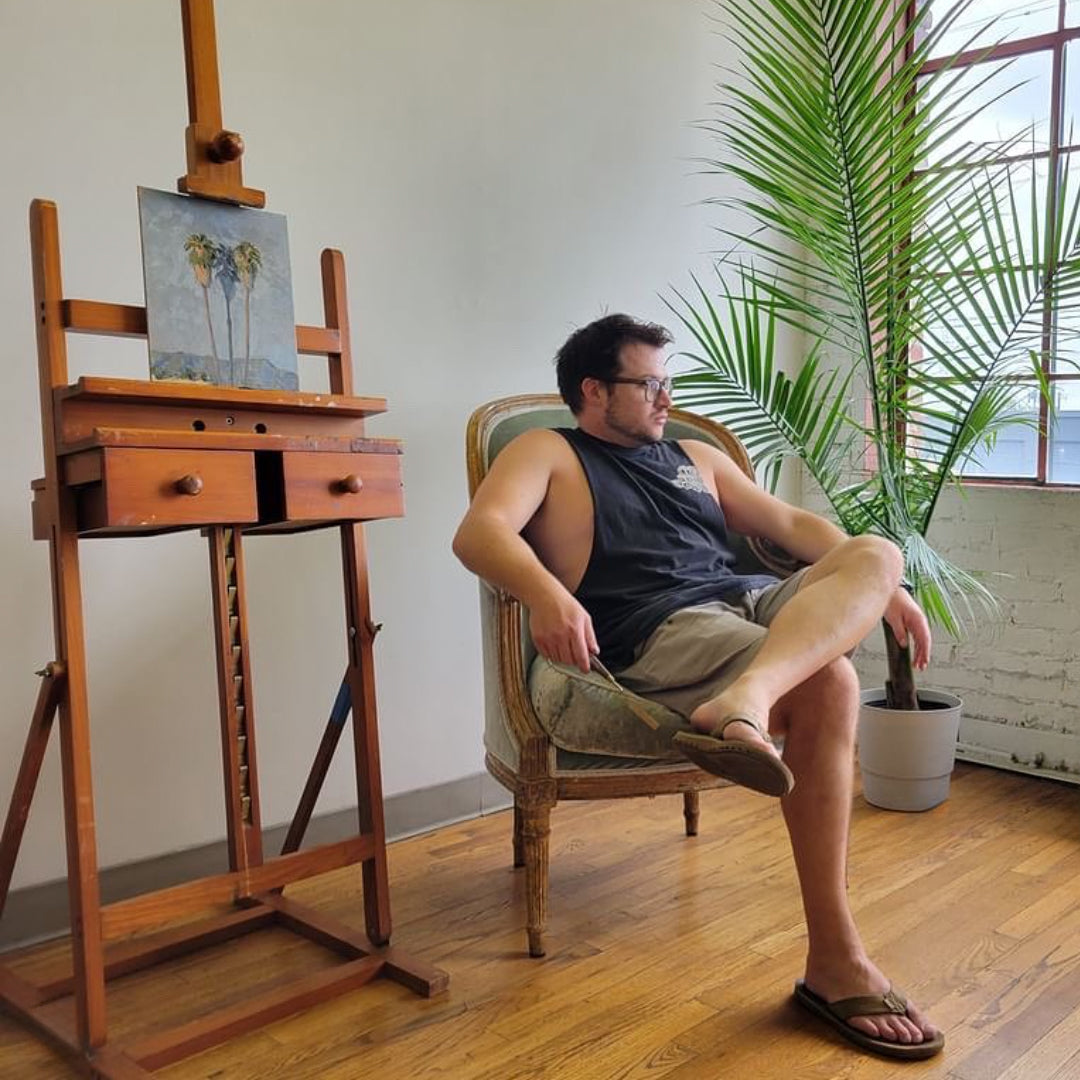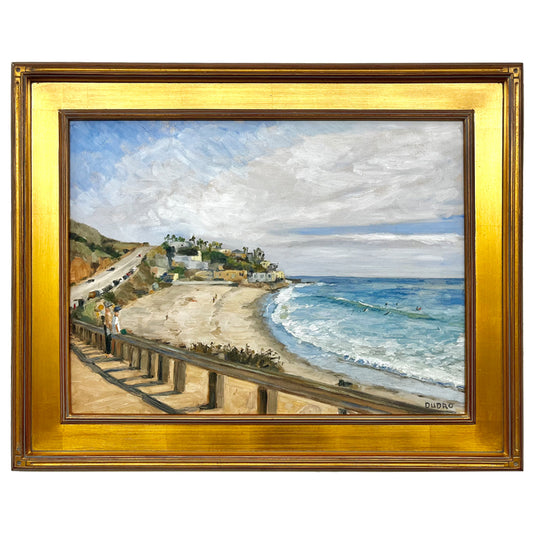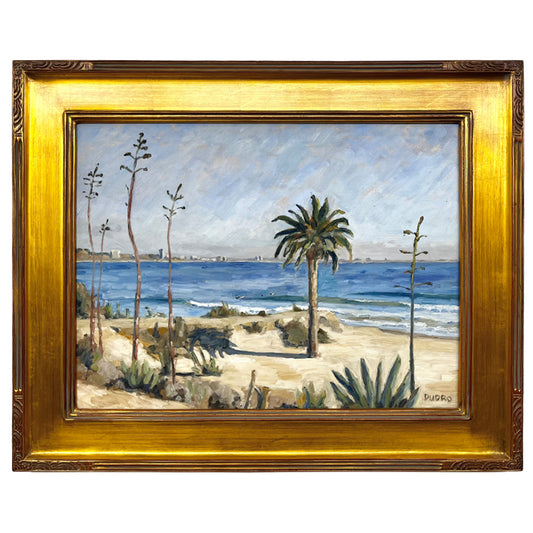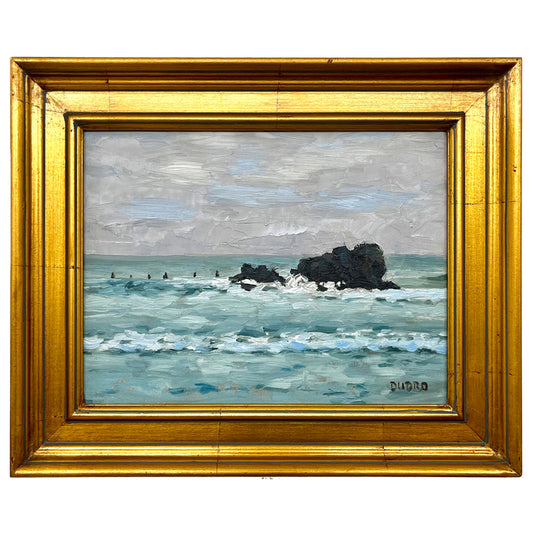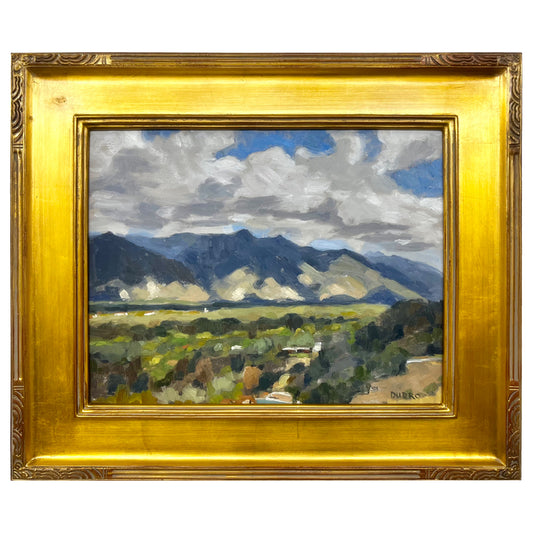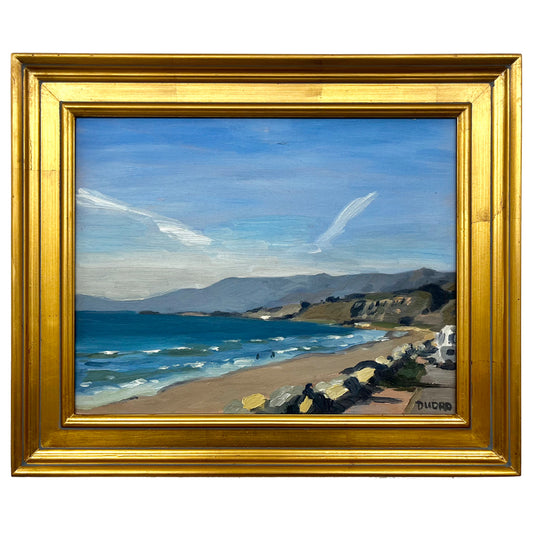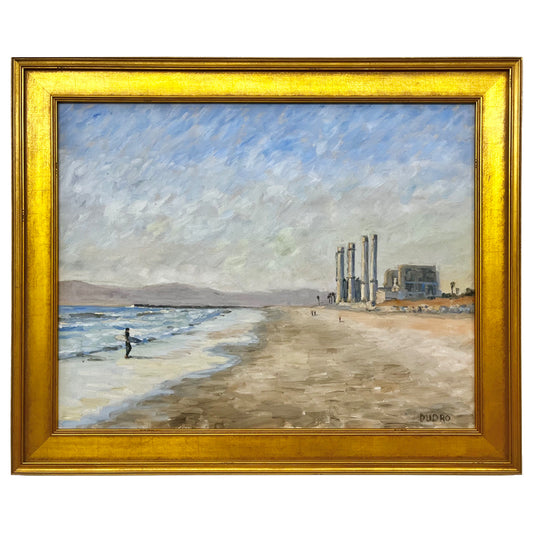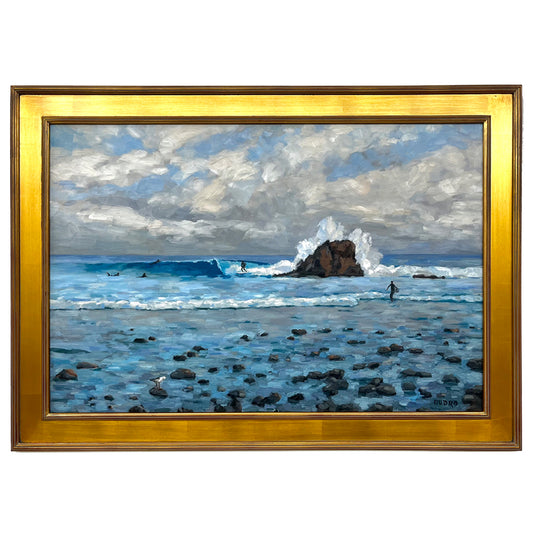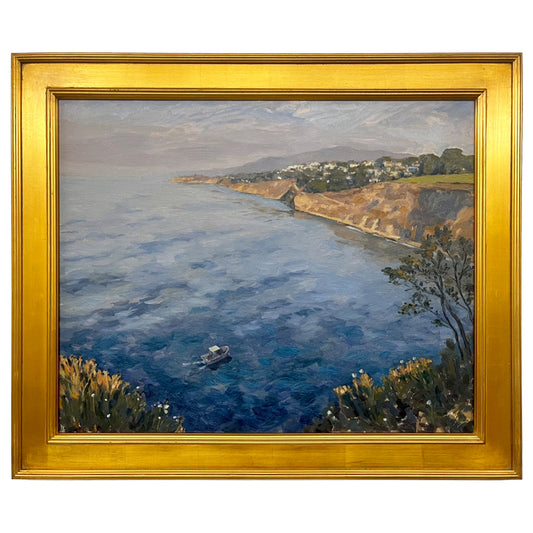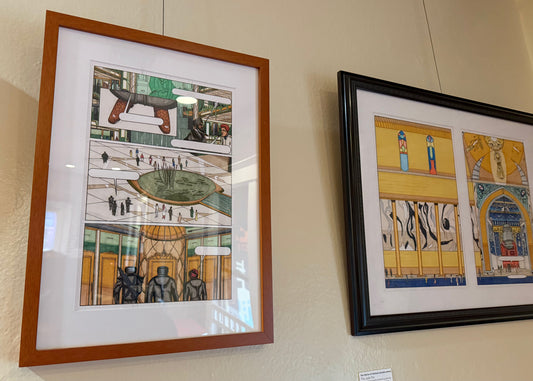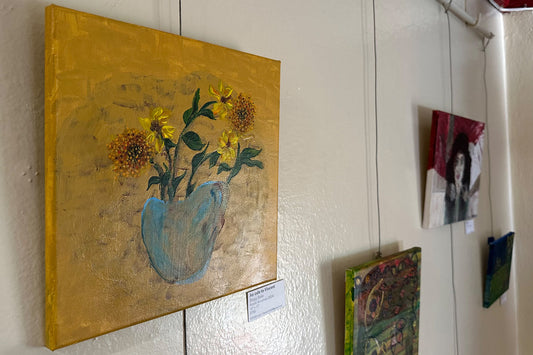We’re excited to share this recent conversation with Stephen Dudro, a South Pasadena-based artist whose work you may have seen publicly exhibited at community hubs like Jones Coffee Roasters or Rosebud Coffee, or through our online gallery at Sector Seven Contemporary Art Gallery. Stephen’s paintings reflect a deep appreciation for the everyday beauty around us—sunsets, cityscapes, quiet roads—filtered through a thoughtful lens shaped by his background in film and classical architecture.
In this interview, Dudro shares why oil is his medium of choice, how he distills the “vibe” of a place rather than its literal details, and what it means to share his work with the South Pasadena community he calls home. Dudro’s landscapes have resonated deeply with viewers and have been collected by art lovers both locally and across the country.
Whether you’ve followed his impressionistic landscapes for years or are just now discovering his work, we hope this conversation brings you closer to the artist behind the brush.

For archival purposes, please note that this interview was conducted over email on March 10, 2025. Esteban Lopez was in South Pasadena, California, while Stephen Dudro was in Fort Worth, Texas on business.
S7CAG: Could you share some insight into how and why you choose the images or scenes you paint? In reference to the works currently on display both in person and online, is there an underlying concept that guides your selection? Are these scenes based on photographs, or were they painted on-site?
Stephen Dudro: I love to gaze at things—pits, for example. There's this huge copper mining pit in Bisbee, AZ that I could stare into for hours. Oceans, sunsets, buildings, and mountains are also good for gazing. There’s a sensory delight in simply looking at something beautiful. The impulse to capture it or make some kind of rendition comes afterward, as a form of veneration. I think my landscape paintings are acts of veneration—tributes to memorable scenes I've witnessed or beautiful places I've seen. I started out doing more figurative work and portraits. That’s really what I’m trying to do with my landscapes: portraits of places.
S7CAG: Why have you chosen to work with oil in this series of artworks? Do you experiment with or use other mediums?
Stephen Dudro: My medium of choice is always oils. I do work in watercolor and gouache, but there’s something incomplete or ephemeral about those. Oils are the ultimate painter's medium to me.
S7CAG: Your work could be described as contemporary impressionism, and I’ve noticed the artworks appear slightly adjusted or “cleaned up” compared to the actual scenes. While the essence remains, what is your thought process behind omitting or refining parts of the scene in the final painting? What is the overall purpose of this approach?
Stephen Dudro: Once a particular scene gets stuck in my head, I'll either go back later and paint it en plein air or take a picture of it and paint from that later in my studio. What I'm trying to paint, though, is the vibe. A photograph captures everything—no discrimination. I like to paint only those parts of a place that resonated with me or that are essential to the vibe. Maybe it's the light on the water, maybe it's the massing of the shapes, maybe it's the color. It’s not necessarily one thing.
Lately, I’ve been painting Los Angeles as a whole—trying to paint the overall vibe. When you think about LA, what are the essential elements? Golden hour light, palm trees, freeways, the beach, etc. Most of my more recent paintings aren’t even of a particular place. I take photos of bits I like as I drive around and then compose them into scenes.

S7CAG: From my perspective, it seems there are two major styles in your current body of work—one being a more classical impressionist style found in the pieces with gold frames, and the other a more modern impressionist approach seen in the pieces with wooden frames. From your perspective, what explains this distinction? Is there a different creative direction or concept behind each style?
Stephen Dudro: In art school, I was reading one day about Lucian Freud talking about his admiration for the Barbizon School—a proto-impressionist movement who would just paint the same forest over and over again—and how painting just a single tree was incredibly difficult. I thought, how hard can it be? I looked out the window and decided to give it a try. Well, it is incredibly difficult, and my first landscape paintings were terrible.
The challenge of plein air painting is a little addictive. At first, that was all I was interested in. Can you paint this before you lose the light and make it look like something? The more traditional impressionist paintings come from that. At some point, I realized that Los Angeles doesn’t quite fit into any one specific vista. So I started abstracting it a little. Maybe if you reduce it down to its elements, you can capture the essence of a place. The more modern-feeling pieces come from that process.
S7CAG: How does your career play a role in your painting process? Has your work as an art director and production designer influenced how you approach your artwork?
Stephen Dudro: Absolutely. I think my art has become much more deliberate and architectural over the years because of my other career. Filmmaking is such a labor-intensive medium. You have to plan everything out, and it's all about creating the spaces where the action will take place. My paintings have become more planned and intentional as a result.
Also, as a production designer and art director, I'm basically an architect for movies. It's all about the sets—the plan, section, and elevation. I also studied classical architecture, and that really informs both my painting and film work. In classical architecture, the emphasis is placed on harmony and unity of the whole. Every detail, every doorknob, is carefully selected to work with the overall design. In painting, that translates to each brushstroke and element.

S7CAG: What do you hope viewers feel or perceive when they experience your artwork? For collectors, what do you hope they take away from living with your work day-to-day? Have you received any common feedback from those who have collected or seen your work firsthand?
Stephen Dudro: Hopefully they love the places I paint as much as I do, and every time they look at my work it evokes that feeling. I think the common feedback I’ve gotten from people who collect my work is that they look at it every day. That’s the highest praise.
S7CAG: Are there any major influences that have played a role in the development of your work? Artists or movements that have particularly shaped your style?
Stephen Dudro: Too many to mention, really. I was raised on a pretty good diet of art history, with an emphasis on everything pre-1940. I think I’ve been in love with every major historical art movement at some point in my life. I have a modest collection of monographs that I ponder regularly.
The Impressionists are huge—Monet, Caillebotte, Manet, Sisley, Morisot. But so are the French Neoclassicists and Old Masters. Sargent, obviously. The Taos School. The California Impressionists. There are so many more. People always bring up Edward Hopper as having certain similarities, although I’ve never really studied him in depth.
It’s funny how inspiration works. I’ll pour over a book on Velázquez, get fired up, and then go paint a skyscraper. How are these things related? Not sure, but they definitely are.

S7CAG: Third-spaces like Jones Coffee Roasters have become increasingly important in the art world, providing a way for artists to connect with their local (and even global) communities. I've come across several galleries moving away from traditional gallery formats and embracing third-spaces to exhibit artwork. As an artist, what does it mean to you to be exhibiting your work in a community hub like Jones Coffee Roasters?
Stephen Dudro: I love it! First, it’s great that people get to see the work during their day. Art is meant to be seen. If a painting is stuck in a forest, does it exist? Traditional gallery spaces are wonderful, especially for the viewing experience, but the reality is that not many people outside of art aficionados bother to go into them.
Second, it’s nice to have the art shown in my own community. As a resident of South Pasadena and the Pasadena area for the last 12 years, it’s good to know that my work is being viewed and collected by my own neighbors.

